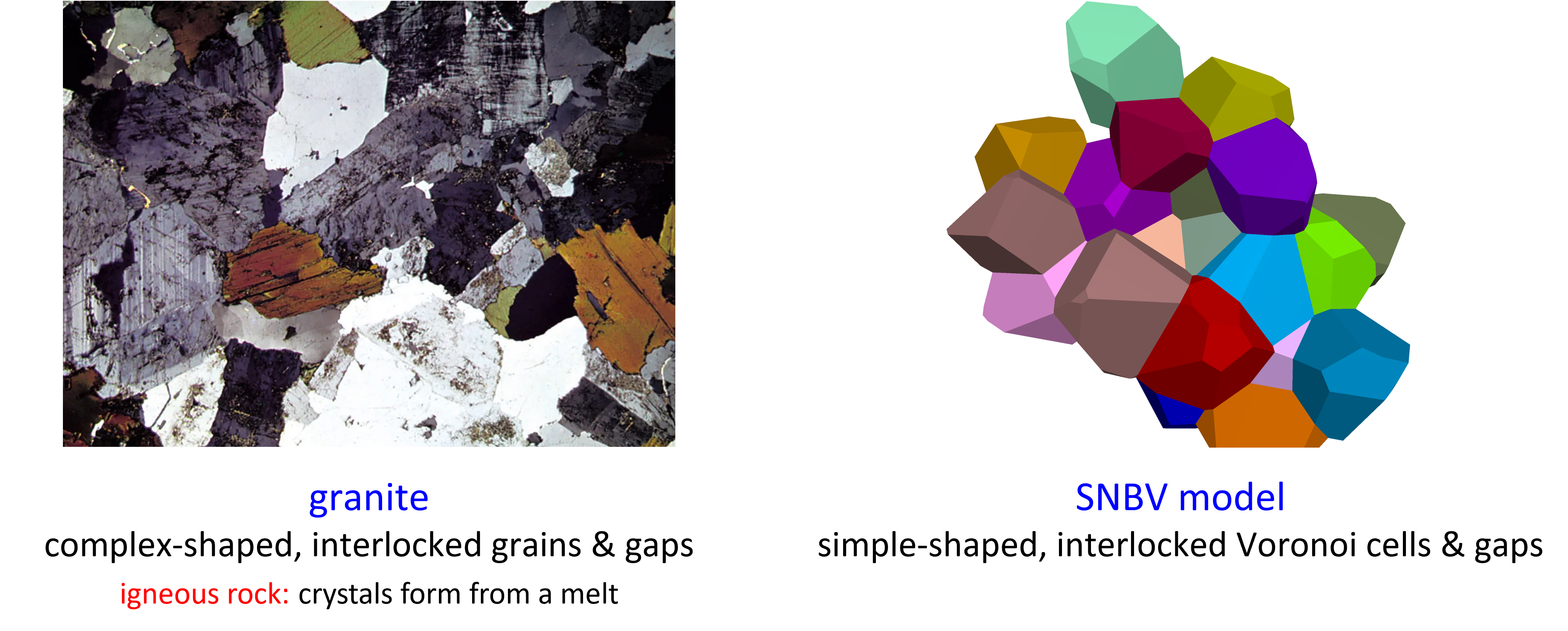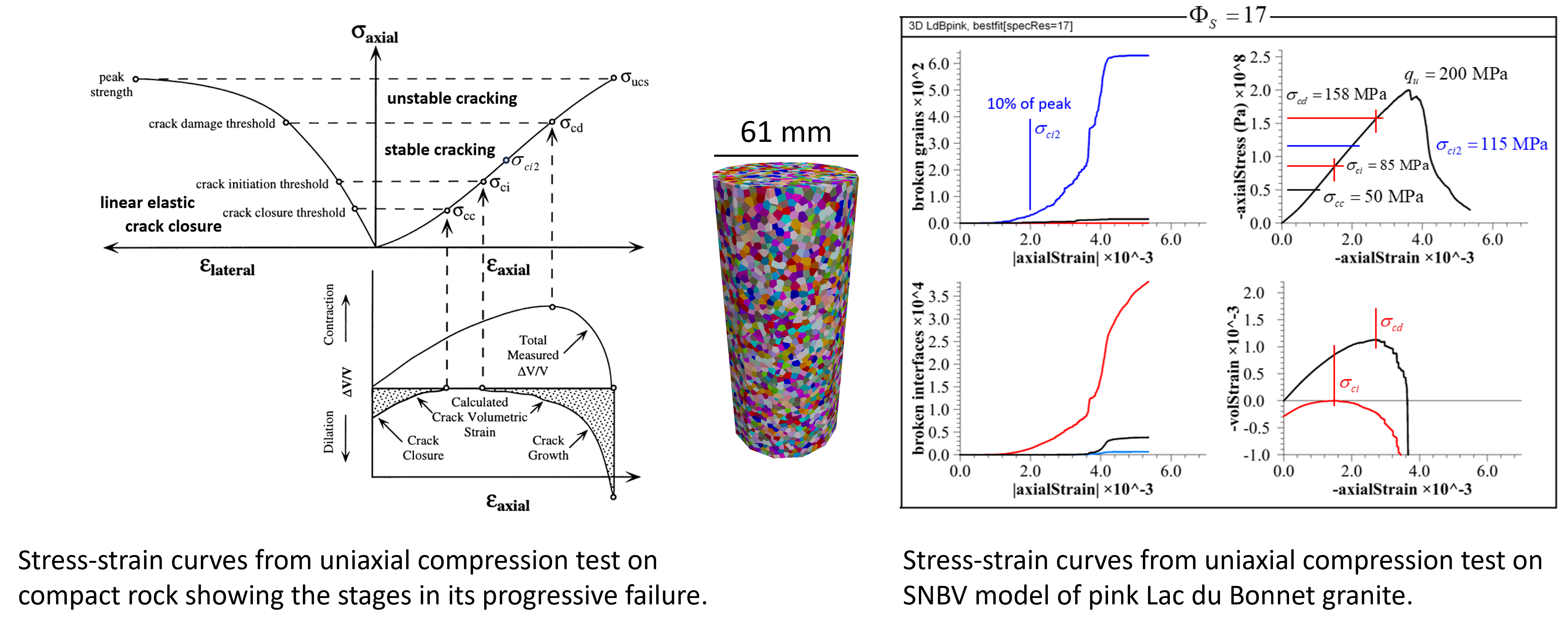SNBV (Subspring Network Breakable Voronoi) Support for PFC3D
Introduction
The essential features of the SNBV Support (Subspring Network Breakable Voronoi) model are as follows (abstract of Potyondy et al. [2025]).
A microstructural rock model based on the distinct element method employing the Subspring Network contact model with rigid, Breakable, Voronoi-shaped grains (SNBV model) is proposed. The model consists of a mesh (3D Voronoi tessellation) of rigid, breakable, Voronoi blocks that correspond directly with rock grains; and thus, the SNBV model is a true microstructural model that can mimic rock microstructure at the grain scale. SNBV material mimics the microstructure of angular, interlocked, breakable grains with interfaces that may have an initial gap and can sustain partial damage. The model embodies the microstructural features and damage mechanisms that occur at the grain scale: initial microcrack fabric; heterogeneity-induced local tension; and intergranular and transgranular damage. The heterogeneity-induced local tension can be introduced in a controlled fashion that is not tied directly to the shape and packing of the grains and the interface stiffnesses. The synthetic material exhibits behavior during direct-tension and triaxial compression tests that matches the behavior of compact rock. The material can be calibrated to match the standard material properties and characteristic stresses of pink Lac du Bonnet granite. The material properties consist of Young’s modulus and Poisson’s ratio corresponding with uniaxial compression and Young’s modulus corresponding with direct tension, as well as tensile strength, crack-closure stress, crack-initiation stress, secondary crack-initiation stress to mark the onset of grain breakage, crack-damage stress, and compressive strengths up to 4 MPa confinement. The model is suitable for studying the grain-scale micromechanics of brittle rock fracture.
Download the SNBV Support Files




Publications
Potyondy, D. O., Fu, W., Purvance, M., & Mas Ivars, D. (2025). A 3D subspring network breakable voronoi model for rock. Submitted to Rock Mechanics and Rock Engineering.
Potyondy, D. O., & Fu, W. (2024). A 3D subspring network breakable voronoi model for rock: laboratory-scale behavior. https://doi.org/10.56952/ARMA-2024-0493
